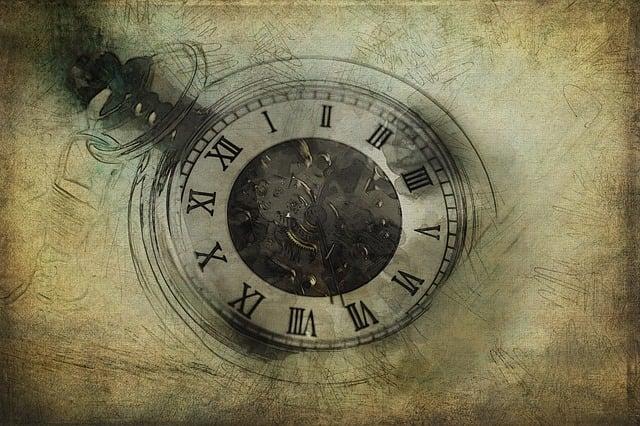When you think of musical theater, it’s hard to ignore the timeless melodies that have become the heartbeat of iconic shows. Among these, “West Side Story” stands tall, a brilliant fusion of romance and street culture. But what’s the magic behind those unforgettable tunes? Who was the mastermind that transformed Shakespeare’s “Romeo and Juliet” into a vibrant, pulse-pounding portrayal of love and conflict on the streets of New York? In this article, we’ll delve into the genius of Leonard Bernstein, whose innovative compositions not only captured the essence of the era but also redefined the musical landscape. With a blend of jazz, classical, and Latino rhythms, Bernstein crafted melodies that resonate with audiences even today, inviting us to explore the intricate tapestry of emotion and artistry woven into this theatrical masterpiece. Join us as we uncover the creative genius that brought “West Side Story” to life and continue to inspire generations.
The Artistic Collaboration that Shaped a Classic
When you think about the unforgettable tunes of *West Side Story*, it’s hard not to imagine Leonard Bernstein and Stephen Sondheim bouncing ideas off each other like jazz musicians improvising in a smoky club. Their collaboration was more than just a meeting of minds; it was a collision of artistic visions that transformed a contemporary retelling of *Romeo and Juliet* into an emotionally resonant musical that danced through the complexities of love, rivalry, and cultural identity. Bernstein’s innovative score, blending classical and jazz influences, paired beautifully with Sondheim’s poignant lyrics, which articulated each character’s inner turmoil and desires, making the story’s heart beat louder with every note. It was like they were sculpting together, chiseling away at raw emotions to create something profoundly moving.
<p>This dynamic duo didn't just write a musical; they crafted an artistic dialogue that resonated across generations. The vibrant rhythms of "America," the aching beauty of "Somewhere," and the explosive energy of "Gee, Officer Krupke!" showcase their ability to capture diverse narratives within a single project. It's fascinating to consider how their collaboration mirrored the streets of New York City—alive, chaotic, and filled with rich layers of culture. Their ability to intertwine complex characters with musical themes created a masterpiece that still inspires artists today. In their hands, music became a language of its own, one that speaks to the shared experiences of love and conflict, shouting into the universe that every story, no matter how tragic, deserves to be sung.</p>

Innovative Musical Techniques that Create Impact
When you dive into the world of West Side Story, it quickly becomes clear that the music isn’t just a backdrop—it’s a character in its own right. Leonard Bernstein employed a kaleidoscope of techniques to ensure that each melody resonated deeply with audiences. For instance, he skillfully utilized contrast to amplify emotional impact. Imagine the tension that builds when you juxtapose the romantic notes of “Something’s Coming” against the harsh realities faced by the star-crossed lovers. Bernstein’s choice to interweave Latin rhythms into the score adds a layer of cultural authenticity, instantly transporting listeners to the vibrant streets of New York City. Additionally, the clever use of polyphony—where different melodies intermingle—creates a breathtaking sonic tapestry that invites the audience to feel the chaotic energy of the Jets and Sharks’ rivalry.
Furthermore, his use of motivic development is nothing short of genius. Take the iconic “Maria”; the simple phrases representing Maria serve not only as a love theme but also undergo transformation, mirroring the characters’ emotional journeys. This is where the magic happens! Bernstein’s exploration of dissonance and resolution pulls the audience along, keeping them on the edge of their seats. It’s almost like riding a rollercoaster, with every rise and fall echoing the characters’ struggles. To give a clearer picture of the emotional arcs, here’s a quick comparison of themes and their emotional context:
| Musical Theme | Emotional Context |
|---|---|
| Something’s Coming | Hope and Anticipation |
| Maria | Love and Yearning |
| Tonight | Passion and Desire |
| Cool | Defiance and Tension |

Cultural Influences: A Deep Dive into the Soundscapes
Exploring the musical fabric of “West Side Story” reveals a tapestry woven from diverse cultural threads. Leonard Bernstein masterfully blended various styles, drawing inspiration from jazz, Latin rhythms, and classical music. This fusion not only reflects the vibrant life of New York City in the 1950s but also captures the essence of the characters’ experiences—urban struggles, youthful passions, and the stark realities of rivalry and love. The rhymes and rhythms create an atmosphere that feels electric, much like the bustling streets themselves. As the melodies interact, they echo the emotions of the young lovers, Tony and Maria, showcasing how music can bridge the gap between different worlds.
What makes the soundscapes of this musical truly remarkable is the intricate layering of cultural influences. From the percussive beats in “Dance at the Gym” to the romantic lilt of “Something’s Coming,” each piece serves as a narrative device that transports the audience. Here’s a look at some elements that enrich the score:
- Jazz Infusions: Quick tempos and syncopated rhythms infuse an exciting energy that encapsulates the spirit of the youth.
- Latino Influence: Rhythmic patterns in the music echo Latin American traditions, underscoring the cultural backdrop of the story.
- Classical Foundations: Elements of classical compositions add depth and sophistication, setting the stage for the emotional highs and lows of the characters.

Timeless Lessons in Storytelling Through Music
When you dive into the melodies of this iconic musical, you’re not just hearing notes; you’re experiencing a profound connection to the emotions and stories woven throughout. Each song serves as a heartbeat, pulsing with life and driving the narrative forward. The music captures the essence of the characters effortlessly. For instance, “Somewhere” encapsulates hope in a world divided, while “Tonight” embodies the fiery passion and urgency of young love. It’s incredible how a simple melody can evoke so much feeling, isn’t it? That’s the beauty of storytelling through music—every note is deliberate, guiding the audience through a tapestry of dreams, fears, and aspirations.
The genius behind these unforgettable melodies lies in their universal themes, resonating across generations. The fusion of jazz influences with classical underpinnings allows listeners to find different meanings every time they hear it. Think about it: how often have you revisited a song, only to discover new layers to its story? This is where the magic happens! Here’s a quick rundown of some key musical elements that contribute to its storytelling prowess:
| Musical Element | Impact on Story |
|---|---|
| Melody | Evokes emotion and connection |
| Rhythm | Shapes the energy and pace of scenes |
| Harmony | Enhances tension and resolution |
By intertwining these elements seamlessly, the creators painted a vivid picture where music acts as both a storytelling device and an emotional guide. It invites us, as listeners, to reflect on our own experiences and emotions, blurring the lines between the story on stage and our personal narratives. Isn’t that what great art is all about? Engaging with the audience on a deeper level, allowing them to revisit their own memories through the prism of another’s experience.

To Conclude
As we wrap up our exploration into the genius behind the melodies of *West Side Story*, it’s evident that Leonard Bernstein and Stephen Sondheim didn’t just compose music; they crafted a symphony of emotions that transcends time and space. Their ability to weave complex themes of love, conflict, and cultural identity into unforgettable tunes is nothing short of alchemical. Just like a skilled chef blends ingredients to create a masterpiece, Bernstein and Sondheim mixed classical influences with contemporary sounds to serve up a musical experience that continues to resonate with audiences today.
So, whether you’re tapping your feet to “Maria” or feeling the intensity of ”Tonight,” remember that each note tells a story, each lyric paints a picture, and together, they capture the very essence of the human experience. The melodies of West Side Story are not merely songs; they are a powerful reminder of the way music can mirror our deepest emotions and challenges. As we close the curtain on this discussion, let’s keep humming those tunes, for they invite us all into a world where love and rivalry dance side by side—just like Tony and Maria in their bittersweet ballet.



